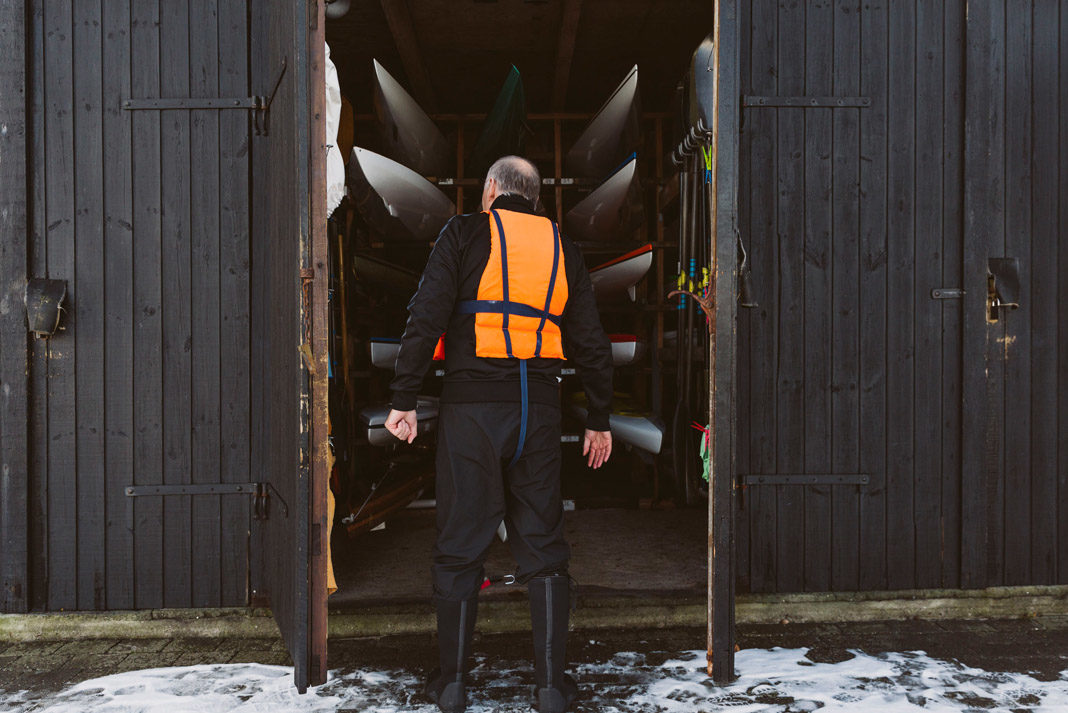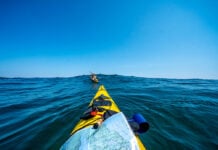Last year an acquaintance of an acquaintance, named Robert, emailed me to ask if he could borrow our three-seater family canoe. I’m ashamed to admit I balked.
I’ve had too many uncomfortable experiences sharing and borrowing stuff. I’m pretty lackadaisical with looking after my own equipment—it’s made to be used, right?
But I’m always worried about what will happen when I loan gear or borrow it from others. I’ve too often received things back damaged, or felt tormented about the wear and tear I inflict on the gear of others.
If I found 100 other people and we pooled our money we’d have an annual gear budget of $300,000.
I once borrowed a new sledgehammer and scuffed the handle with a missed swing, but then felt awkward when I returned the tool with a bottle of wine worth more than the tool itself. Another time I borrowed a friend’s cheap indoor bike trainer and wore it out training for an Ironman. I paid them full price for it and then threw it in the garbage, wishing I’d just bought myself a good one in the first place.
I think sharing expensive outdoor equipment is a great idea in principle – but what happens when high-value items are lost or damaged?
“An outfitter would probably not charge as much for replacement as it would cost me, so there is a greater financial risk to both of us in a private rental,” I replied to Robert.
In hindsight I’m ashamed for being so uptight. I feel like a hypocrite because I know the outdoor recreation community could do a much better job of sharing. The fact outdoor enthusiasts collectively spend $120 billion a year on gear, which sits unused most of the time, is both colossally inefficient and bad for the planet.
Wouldn’t it be smart to have a communal gear garage where all this equipment exists and is owned collectively?
Thanks to a new competitive paddleboarding habit, I easily spend $3,000 a year on paddling gear. If I found 100 other people and we pooled our money we’d have an annual gear budget of $300,000.
It exists in other competitive sports. Why is there no equivalent equipment sharing model for sea kayaking, canoeing or paddleboarding?
This sort of sharing is already being done by organizations. When I was studying outdoor recreation at university, there was a gear library where students could sign out equipment for personal trips. During a month housesitting in Eugene, Oregon, I joined the University of Oregon outdoor club and dropped in on a multi-day rafting trip down the Rogue River—no personal gear required.
Competitive sports like rowing and canoe racing have membership structures providing access to a fleets of club boats. Why is there no equivalent equipment sharing model for sea kayaking, canoeing or paddleboarding?
With the sharing economy taking off, why not develop a web platform to mediate gear sharing, like an Airbnb for kayaks and canoes? This was the plan of the Boston-based entrepreneurs Mike Brown and James Rogers, who launched GearCommons.com in 2013 to help outdoor enthusiasts rent gear to each other. The fledgling company got lots of media traction—everyone thought it was a great idea. The entrepreneurs signed up users with a collective $1 million of outdoor gear available for rent.
The problem was, nobody ever used it.
After two years, the pair abandoned the failed start-up noting a lack of equipment is only the second biggest problem keeping people from getting outdoors. Number one is lack of time.
In a postmortem chronicle of the company’s rise and demise, Brown concludes, “The two-sided marketplace model was high friction and required large amounts of time from both sides; renter and owner—request, approval, emails, texts, pickup, return, etc.” In other words, their solution to the gear problem made the time crunch even worse.
There’s another option out there for sharing called the Library of Things, which is essentially a non-profit rental business centred around the values of community and sustainability. There are examples all over the world, including near my home. What started as the Toronto Tool Library has successfully expanded into SharingDepot.ca, a downtown storefront lending out camping gear, including tents, tarps, stoves and coolers for a nominal membership or borrowing fee.
The idea has potential but most of the gear is suited to first-time or occasional users, not outdoor aficionados, and not likely readers of this magazine.
I want to suggest we all jump on board this idea, set up a library of things for outdoor gear in our communities.
The thing is, I really like owning my own gear.
Maybe it’s because wilderness-based recreation has always been partly about getting outside the sandbox of organized sports; for me, having gear to call my own is part of the libertarian appeal. It means I can go when I want with the gear I want.
There’s really nothing wrong with buying the gear you love and use most often. As financial planning guru Gordo Byrn blogged recently, “The best deals I’ve done are where I’ve traded money for time.” And as the GearCommons founders learned the hard way, there’s nothing more time-efficient than owning your own gear.
I think the best way to share gear is to let it happen organically.
Just as we’ve learned the perils of relying on Silicon Valley to mediate our face-to-face friendships, our gear sharing conundrum will not be solved by some tech-savvy millennials and their venture capital backers in a downtown loft, but the system that’s already in place, and always has been.
Another paddler in my neighbourhood recently invited me to demo two expensive new race paddleboards he’d borrowed from the local shop. We were joined by another friend, so between our own boards and the demos we had a quiver of five boards to test ride, no waivers or small print user agreements required.
After paddling for a few hours I had a whole different feeling than the physical buzz I get from paddling alone.
It was a warm glow of connection, of not being the only crazy person this side of Nebraska who is out dodging ice floes on the Great Lakes in February. I also learned about board design and picked up a few paddling tips. This just goes to show how quickly and easily you can expand your gear closet and combat social isolation at the same time.
I propose we build on our existing strengths as an outdoor community and go completely analog, building the million-dollar gear shed the traditional way, through good old fashioned face-to-face relationships.
As for my interaction with Robert, he responded to my reflexive paranoia with true class. After his trip he sent me a picture of his whole family paddling in the canoe he rented. He also invited me to come out paddling and try his surf kayak. I may not be posting my own gear for rent on the internet anytime soon, but the next time Robert asks to borrow my canoe, I’ll say yes.
Tim Shuff is the former editor of Adventure Kayak magazine and works as a firefighter and ice rescue instructor in Toronto. See the Pyranha Octane he borrowed from Paddling Magazine.









